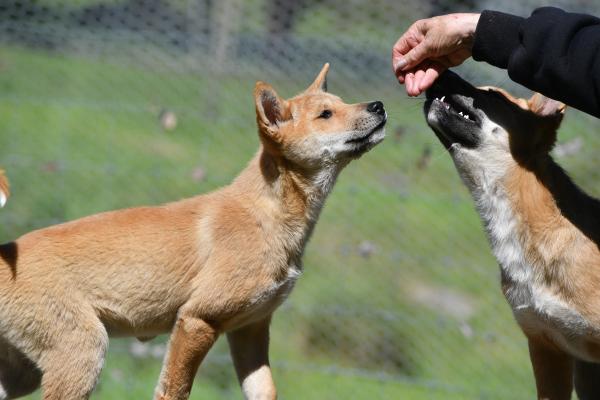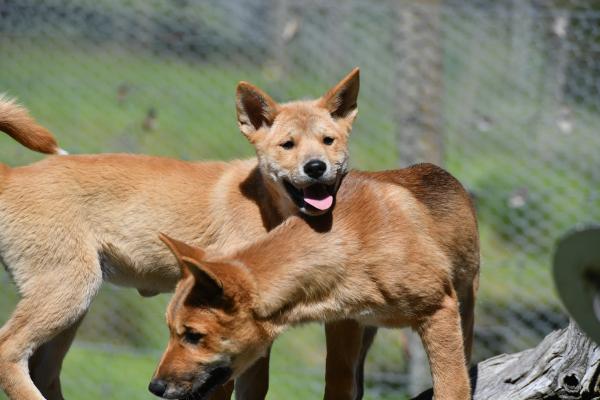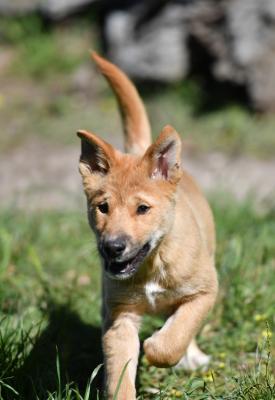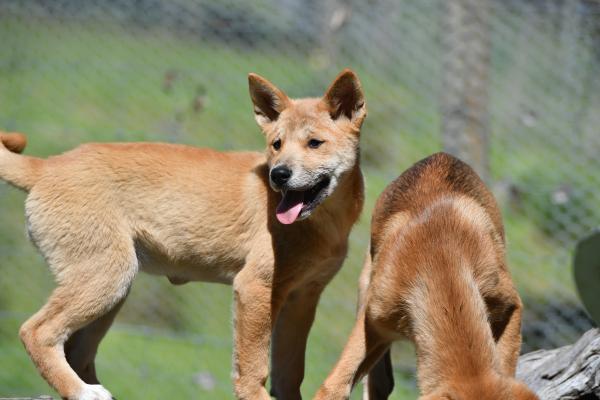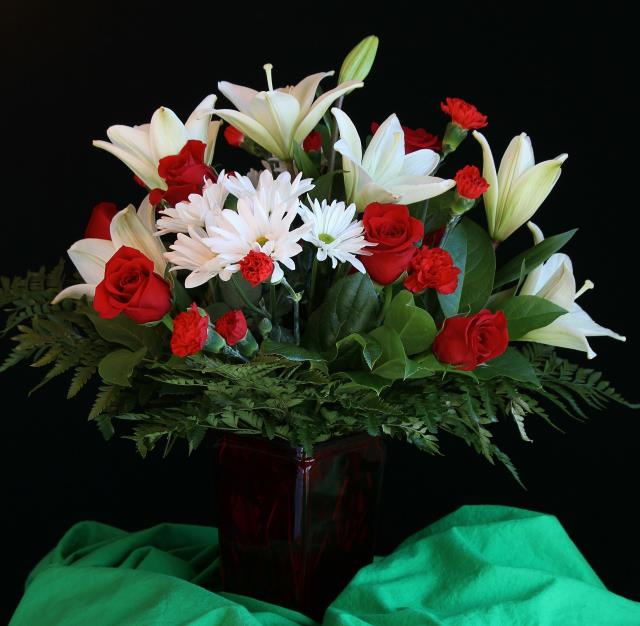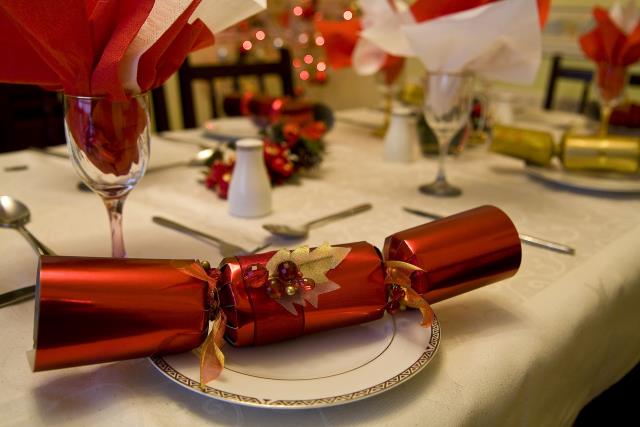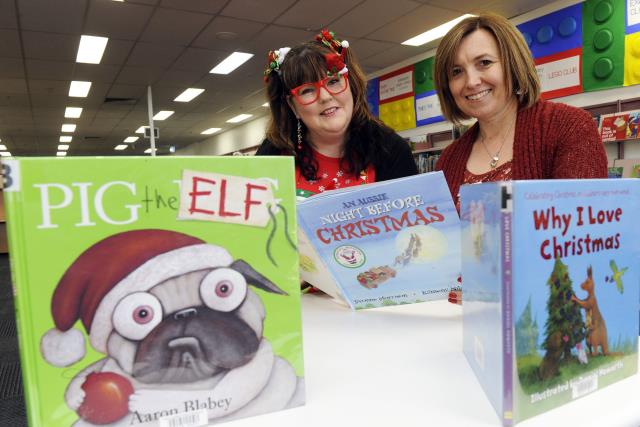Nestled on the side of a hill, down a dirt road and overlooking the incredible Macedon Ranges sits a 40-hectare sanctuary for a group of 43 dingoes and four dingo cubs. Sarah Oliver visited the Toolern Vale sanctuary to find out more about its work and the dingoes it cares for.
The Dingo Discovery Sanctuary, Research and Education Centre is the only one of its kind in the world, and it aims to preserve and conserve the gene pool of the original dingo, educate the public, facilitate non-invasive research and participate in rehabilitation.
Sanctuary supervisor and zoologist, Kevin Newman, says they’re working towards finding a way for dingoes and people to exist together.
“There’s still a lot of anti-dingo sentiment which is what we as an organisation are trying to counteract,” Kevin says.
Although there are some areas where dingoes are protected in the wild, Victoria still has a bounty on dingoes who venture into private land.
This means any landowner can hunt and kill a dingo if it’s on or within three kilometres of their property, continuing the classification of the dingo as ‘threatened’ under the flora and fauna guarantee act 1988.
“Realistically, humans are the biggest danger to dingoes more than anything else,” Kevin says.
“If they’re treated right and they’re raised right, or if you just leave them alone in the wild, they’re extremely wonderful animals
“More people get injured by domestic dogs in their own house than ever will get injured from a dingo.”
The dingoes live in pairs in the sanctuary with life-long partners monogamously, and act more like cats than people realise.
“They’re more like a cat in a dog suit,” Kevin says.
The sanctuary houses all three breeds of dingoes – alpine, desert and tropical – with the focus mainly on the most at risk: alpines.
One such alpine dingo is the famous Wandi who was found after being dropped in someone’s backyard, most likely by a bird of prey, and is now the subject of a new children’s book written by Favel Parrett, who also volunteers at the sanctuary.
The book is an entertaining source of information for children, which Kevin says is vital to educating Australians from an early age about dingoes.
“That’s really something we’re really working on … especially with something like Wandi’s book, it’s getting to the kids and getting into the schools,” he says
“He has really brought attention to the fact that there are still pure dingoes left here in Victoria, and that it’s important to protect them because they are at threat.”
The dingoes are either bred in the sanctuary, or arrive as wild-born rescues.
Many people will call the sanctuary when they have found a dingo in need of rescue, however Kevin says it’s important to make sure the dingo or cub actually needs rescuing.
“The problem is often … they’re not really orphaned, it might just be that their parents are off hunting… so sometimes dingoes can get taken out of the wild that don’t need to be.
“We actually try and encourage people not to take them out and only after observing them and watching them a period of time, even weeks or days … just making sure there’s no parents returning.
“Because we don’t want to have to keep taking animals away from their family and away from the area where they should be living if it’s not necessary.”
The sanctuary differs from others with its focus on DNA purity, with samples sent to the University of New South Wales for testing.
“That’s really important to us; for keeping that genetic line of pure dingoes that we always have into the future,” Kevin says
“We know they still exist in the wild, they’re still out there in the wild but we want to make sure we’re not going to lose them.”
Wandi recently fathered two cubs who are being taken care of at the sanctuary by Kevin and the volunteers.
Kevin says Wandi still looks up at the sky to look out for any prey in order to protect his cubs.
The cubs, along with two others from another pair of dingoes, will be raised in the sanctuary to get used to people so that when they are older, they will be a good resource for education.
There are still many dingoes who will never have the right personality for human interaction and so will eventually be released back into the wild when they’re ready, according to Kevin.
He hopes society will get to a point where there is not so much negative stigma attached to dingoes.
He says the bounty was born out of farmers and landowners wanting to protect livestock with negative feelings towards dingoes being “a very ingrained ideology”.
“In reality, there’s not a lot of livestock that are taken by predators. It’s a really low number”
Wooleen cattle station in Western Australia is one of very few who allow healthy, stable dingo populations to live on the property.
The dingoes help with controlling the rabbit population, scare away kangaroos or feral goats and pigs. Dingoes also don’t hassle cattle because they’re too big for a dingo to hunt.
They also only eat lean meat like rabbits, possums and sometimes fish. They also love insects.
“The fact is so many other countries are doing it so much better than we are. They work out different ways to protect livestock from jaguars, lions, coyotes, wolves,” Kevin says.
There is now a group, Landholders for Dingoes, who help to educate landowners and farmers about how they can incorporate dingoes into how their stations are run.
“It’s about how we can look at co-existing with them rather than trying to wipe them out completely,” Kevin says.
The sanctuary offers private tours via donations to the Australian Dingo Foundation.
Details: https://dingofoundation.org/


